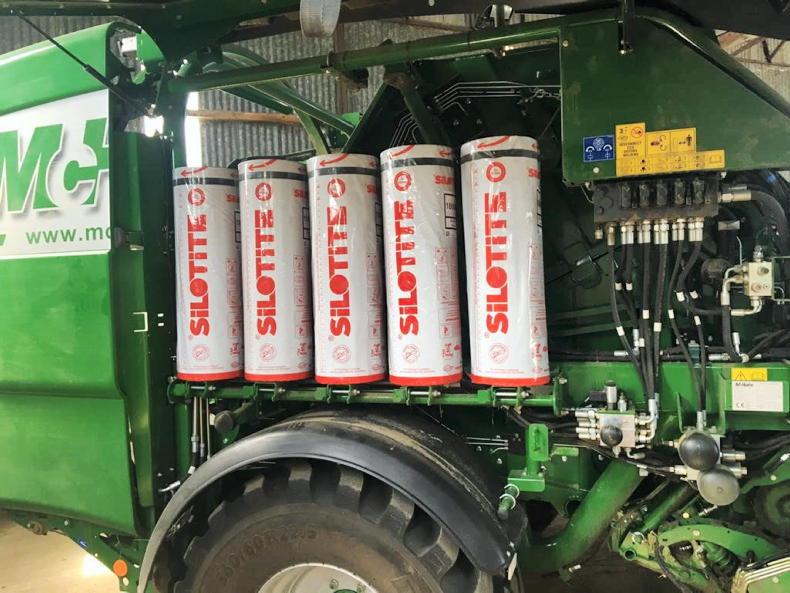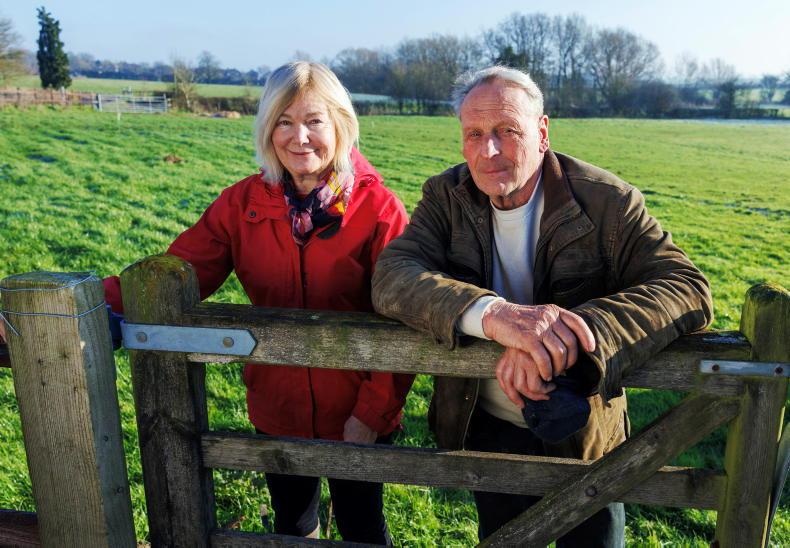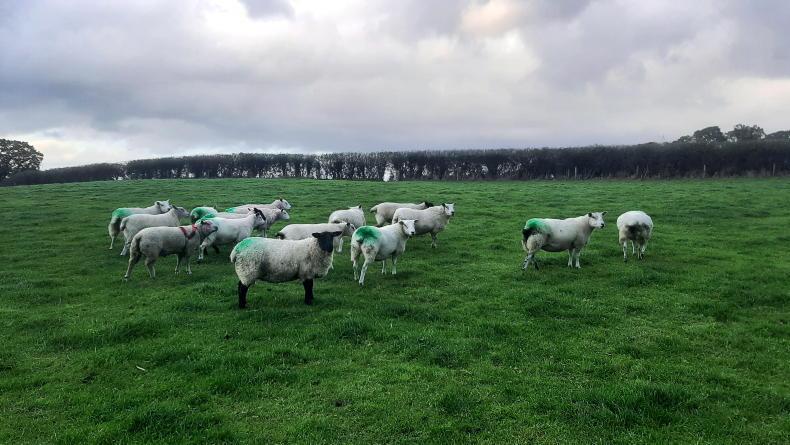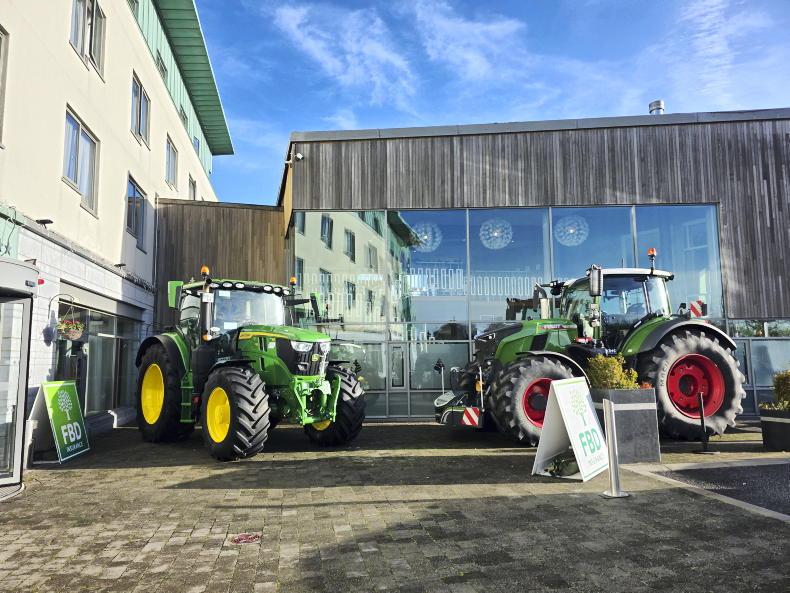Can you tell us a little bit about the Berry Group, who they are, what they do and where they are based?
“Berry’s headquarters is in Indiana in the US. The company has 285 plants worldwide, employs 48,000 people and is listed on the New York stock exchange.
“Berry is a global manufacturer of plastic products, and if not the largest manufacturer in the world, then definitely it’s in the top two. The company has several core divisions including health, hygiene, consumer packaging and engineered materials. The firm manufacture all types of packaging, car and machine components, and pharmaceutical components.”
How big is the agriculture division with the group?
“The agriculture division falls under the engineered materials section of the business. Engineered materials account for 25% of the Berry Group, while agriculture would account for 25% of the sub group. In terms of volume it’s quite big. The company purchase 1.5 million tonnes of polymer on an annual basis as a group. Agriculture would account for 150,000t of that. The European agri division would be bigger than the American agri division. The agri side of the business would be very much focused around our main brand, which is Silotite. Within agriculture, bale wrap would be the largest part of the business, accounting for 80%. We are also involved in silage sheeting and grain bags, while horticulture such as film and greenhouse film and tunnel covers.”

Lloyd Dawson, Sales Director with Berry Agriculture
When did Berry start manufacturing bale wrap?
“Berry started making bale wrap in the early 1980s, from the very beginnings of it really. Silotite brought the first ever three-layer film to the market. It was a product specifically engineered to make silage – it changed the standard and the consistentcy of the product that was available at the time.
“To go back to the start, a guy called Lloyd Foster, who was a hill farmer in Northumberland, came up with the concept of putting a round bale into a plastic bag. That was in the early 1980s – maybe 1982. He then went to Australia and met up with a manufacturer down there who was making stretch wrap to go around reels of paper in a paper mill. He connected that with an easier concept of wrapping a round bale and he brought that idea to the UK and that’s where the connection came from with ourselves. That was the birthplace of wrapping bales.
“Research was carried out at Institute of Biological, Environmental and Rural Sciences (IBERS) College in Wales and we began manufacturing the bale wrap day one at our plant in Herefordshire.”
Where is Silotite manufactured?
“We manufacture bale wrap in England, Belgium, the US and Canada. For the European market, all bale wrap is produced in Herefordshire in the UK and Zele in Belgium. We are exporting bale wrap to over 85 countries worldwide.”
How important is bale wrap to the group?
“Within our agri division, bale wrap accounts for 80% of what we do, while the remaining 20% in Europe is predominately silage sheeting. Silotite is our main global brand, it’s what we started with. We have some other brands which came about through mergers and acquisitions over the years. We have developed ourself to be the largest manufacturer in the world by building very close relationships with the OEMs. We need to follow the machine and work with manufacturers. Without the machine, our products are not much good, and vice versa. That has been ongoing for the last 40 years since the evolution of bale wrap.
“We look at the challenges farmers and contractors face, and look at legislation so we invest smartly to meet future challenges. Not all new ideas make it to the forefront. A lot of products that are developed could be field tested for five and six plus years before they even get to the commercial department.
“Sometimes you work with an OEM on a development and you get to 100,000 bales through a machine and next thing they pull the plug because the machine needs some changes, so you go back to square one again. It takes a lot of work in the background to develop such new products.”
Can you tell us a bit about the production and quality process at the manufacturing plant?
“This goes back to years of work behind the scenes. We’re not looking for a film to stretch around a bale, we want a film with a high holding force. We’re making the film stiffer, which requires investment in nine-layer extrusion to allow us to make a stronger film, at a lighter weight. This is to hold the density of the bale when it comes out of the chamber, to avoid stretching.

“Our quality process is completely automated. Every roll that comes off the production line is weighed and recorded. A robot labels every single roll. That gives it complete traceability to the line. A camera system monitors the plastic bubble, sending multiple messages to the control every minute. All of the materials are measured, weighed and tested once we take them in. The lab side of the business is bigger than the R&D division, as we’re producing 24 hours a day, seven days a week. These guys are constantly testing. They have to because we make all the wrap for the season before the season starts, so we can’t afford to have any issues.”
What percentage of bales are being made with NRF worldwide?
“Ireland and Northern Ireland is leading the way worldwide when it comes to NRF. Northern Ireland has moved the quickest. Percentage wise, there are more bales being made in Northern Ireland with NRF than there is anywhere in the world. I suppose it’s a small area, and it’s a high milk producing region. I’d estimate that at least one third of bales are made in the region with NRF. I would estimate that 20-25% of all the bales made in the Republic of Ireland are done so with NRF. After that it’s the Scandinavian region, followed by France, the UK and Germany.”
What percentage of production is NRF v bale film?
“Bale plastic still dominates production, but NRF is increasing. I think you could say 95% bale wrap vs 5% NRF. But I see massive growth in NRF in the next few years. It could easily become 10-20% of our film production in the next five years.”

What percentage of the Irish market do you anticipate Silotite account for?
“It’s hard to gauge exactly what’s what in the Irish market, but based on the IFFPG figures, I’d estimate that we probably have a quarter of the market. We have a long history in Ireland, we’ve been in the market here since the very start. We would call the UK and Ireland our home markets. In the NRF side of things, we have over 50% of the Irish market.”
Where is the largest markets for Silotite and what are the top five markets?
“Our most important markets in this order would be the UK, France, Germany, Ireland, New Zealand and then the Nordic countries. Ireland would account for roughly 5% of Berry’s global bale wrap production”.
Can you tell us a bit about current production costs in comparison with previous years?
“Last year, prices rocketed upwards in-season. We build our stocks generally from August through to March for the year we are going to be selling it into. So last year, much of the stock we had built was done so before the large increases in production costs. This year, stocks have been built at high costs. Then, we saw polymers dropping off, but not dramatically. The price of a box of film for silage this summer won’t be too far off the starting price for film at the beginning of last season. It will a couple of euros higher.”

Where are resin costs at present, and how does this compare to resin costs in 2020, 2021 and 2022?
“In 2020, we were at a very low point with resins. Resin costs almost doubled in the following two years.
“They have since fallen well back and we are over that, but – and this is the big but, all our other costs have increased. Energy prices have doubled, and we won’t see that falling until we get into next years stock build.
“Salary increases, transport costs etc have all also gone up. However, if you look to 2024, your looking at costs further coming back again.”
What is the outlook on the Irish and global market for 2023?
“I think that NRF will continue to grow. Of course, there will be more competition in this growing market.
“I can see net wrap dropping in numbers. I feel bale numbers will remain quite steady, but I can see some of the larger dairy farmers going towards clamps. I am seeing some dairy farmers using bales in a multi cut system.”
Can you tell us a little bit about the Berry Group, who they are, what they do and where they are based?
“Berry’s headquarters is in Indiana in the US. The company has 285 plants worldwide, employs 48,000 people and is listed on the New York stock exchange.
“Berry is a global manufacturer of plastic products, and if not the largest manufacturer in the world, then definitely it’s in the top two. The company has several core divisions including health, hygiene, consumer packaging and engineered materials. The firm manufacture all types of packaging, car and machine components, and pharmaceutical components.”
How big is the agriculture division with the group?
“The agriculture division falls under the engineered materials section of the business. Engineered materials account for 25% of the Berry Group, while agriculture would account for 25% of the sub group. In terms of volume it’s quite big. The company purchase 1.5 million tonnes of polymer on an annual basis as a group. Agriculture would account for 150,000t of that. The European agri division would be bigger than the American agri division. The agri side of the business would be very much focused around our main brand, which is Silotite. Within agriculture, bale wrap would be the largest part of the business, accounting for 80%. We are also involved in silage sheeting and grain bags, while horticulture such as film and greenhouse film and tunnel covers.”

Lloyd Dawson, Sales Director with Berry Agriculture
When did Berry start manufacturing bale wrap?
“Berry started making bale wrap in the early 1980s, from the very beginnings of it really. Silotite brought the first ever three-layer film to the market. It was a product specifically engineered to make silage – it changed the standard and the consistentcy of the product that was available at the time.
“To go back to the start, a guy called Lloyd Foster, who was a hill farmer in Northumberland, came up with the concept of putting a round bale into a plastic bag. That was in the early 1980s – maybe 1982. He then went to Australia and met up with a manufacturer down there who was making stretch wrap to go around reels of paper in a paper mill. He connected that with an easier concept of wrapping a round bale and he brought that idea to the UK and that’s where the connection came from with ourselves. That was the birthplace of wrapping bales.
“Research was carried out at Institute of Biological, Environmental and Rural Sciences (IBERS) College in Wales and we began manufacturing the bale wrap day one at our plant in Herefordshire.”
Where is Silotite manufactured?
“We manufacture bale wrap in England, Belgium, the US and Canada. For the European market, all bale wrap is produced in Herefordshire in the UK and Zele in Belgium. We are exporting bale wrap to over 85 countries worldwide.”
How important is bale wrap to the group?
“Within our agri division, bale wrap accounts for 80% of what we do, while the remaining 20% in Europe is predominately silage sheeting. Silotite is our main global brand, it’s what we started with. We have some other brands which came about through mergers and acquisitions over the years. We have developed ourself to be the largest manufacturer in the world by building very close relationships with the OEMs. We need to follow the machine and work with manufacturers. Without the machine, our products are not much good, and vice versa. That has been ongoing for the last 40 years since the evolution of bale wrap.
“We look at the challenges farmers and contractors face, and look at legislation so we invest smartly to meet future challenges. Not all new ideas make it to the forefront. A lot of products that are developed could be field tested for five and six plus years before they even get to the commercial department.
“Sometimes you work with an OEM on a development and you get to 100,000 bales through a machine and next thing they pull the plug because the machine needs some changes, so you go back to square one again. It takes a lot of work in the background to develop such new products.”
Can you tell us a bit about the production and quality process at the manufacturing plant?
“This goes back to years of work behind the scenes. We’re not looking for a film to stretch around a bale, we want a film with a high holding force. We’re making the film stiffer, which requires investment in nine-layer extrusion to allow us to make a stronger film, at a lighter weight. This is to hold the density of the bale when it comes out of the chamber, to avoid stretching.

“Our quality process is completely automated. Every roll that comes off the production line is weighed and recorded. A robot labels every single roll. That gives it complete traceability to the line. A camera system monitors the plastic bubble, sending multiple messages to the control every minute. All of the materials are measured, weighed and tested once we take them in. The lab side of the business is bigger than the R&D division, as we’re producing 24 hours a day, seven days a week. These guys are constantly testing. They have to because we make all the wrap for the season before the season starts, so we can’t afford to have any issues.”
What percentage of bales are being made with NRF worldwide?
“Ireland and Northern Ireland is leading the way worldwide when it comes to NRF. Northern Ireland has moved the quickest. Percentage wise, there are more bales being made in Northern Ireland with NRF than there is anywhere in the world. I suppose it’s a small area, and it’s a high milk producing region. I’d estimate that at least one third of bales are made in the region with NRF. I would estimate that 20-25% of all the bales made in the Republic of Ireland are done so with NRF. After that it’s the Scandinavian region, followed by France, the UK and Germany.”
What percentage of production is NRF v bale film?
“Bale plastic still dominates production, but NRF is increasing. I think you could say 95% bale wrap vs 5% NRF. But I see massive growth in NRF in the next few years. It could easily become 10-20% of our film production in the next five years.”

What percentage of the Irish market do you anticipate Silotite account for?
“It’s hard to gauge exactly what’s what in the Irish market, but based on the IFFPG figures, I’d estimate that we probably have a quarter of the market. We have a long history in Ireland, we’ve been in the market here since the very start. We would call the UK and Ireland our home markets. In the NRF side of things, we have over 50% of the Irish market.”
Where is the largest markets for Silotite and what are the top five markets?
“Our most important markets in this order would be the UK, France, Germany, Ireland, New Zealand and then the Nordic countries. Ireland would account for roughly 5% of Berry’s global bale wrap production”.
Can you tell us a bit about current production costs in comparison with previous years?
“Last year, prices rocketed upwards in-season. We build our stocks generally from August through to March for the year we are going to be selling it into. So last year, much of the stock we had built was done so before the large increases in production costs. This year, stocks have been built at high costs. Then, we saw polymers dropping off, but not dramatically. The price of a box of film for silage this summer won’t be too far off the starting price for film at the beginning of last season. It will a couple of euros higher.”

Where are resin costs at present, and how does this compare to resin costs in 2020, 2021 and 2022?
“In 2020, we were at a very low point with resins. Resin costs almost doubled in the following two years.
“They have since fallen well back and we are over that, but – and this is the big but, all our other costs have increased. Energy prices have doubled, and we won’t see that falling until we get into next years stock build.
“Salary increases, transport costs etc have all also gone up. However, if you look to 2024, your looking at costs further coming back again.”
What is the outlook on the Irish and global market for 2023?
“I think that NRF will continue to grow. Of course, there will be more competition in this growing market.
“I can see net wrap dropping in numbers. I feel bale numbers will remain quite steady, but I can see some of the larger dairy farmers going towards clamps. I am seeing some dairy farmers using bales in a multi cut system.”














SHARING OPTIONS